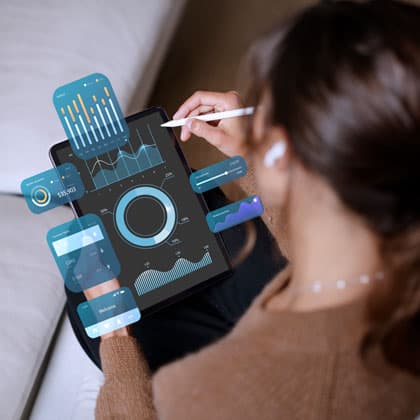Communication is essential in any interaction to form relationships, and in sales, it is one of the fundamental pillars. However, when we talk about communication, we often focus solely on words and overlook a crucial aspect: nonverbal communication.
Body language is how we express our emotions and thoughts through gestures, facial expressions, glances, and postures. An action can convey much more than any words, and if as sellers, we can identify what people are expressing through their body language, we have the advantage of anticipating situations and acting in favor of our sales.
How can body language help in my sales?
A study from Harvard University found that sellers who were aware of their customers’ body language were more likely to close sales, and another study from the University of California in Berkeley found that sellers who used body language effectively were more likely to be perceived as trustworthy and competent.
It is an indirect way to understand how your customers feel about what you are saying. For example, if a customer is crossing their arms or looking away, they may not be interested in what you are saying. You should change your strategy before losing their attention completely.

On the other hand, if a customer is nodding or making eye contact, you can infer that they like what they hear, and you should focus on convincing them 100%.
Body language can also help you identify signals that a customer is ready to buy. For instance, if a customer is asking specific questions about your product or service, they may just want to clarify a few last doubts before finalizing the transaction.
What body language signals should you look for?
There are many signals that can indicate a person’s attitude toward what you are saying:
- Eye contact: a sign of interest and attention. If a customer looks you in the eyes while you speak, they are likely paying attention. Conversely, if they are constantly looking away, they may not be very interested in what you have to say.
- Nodding: a way of showing agreement or understanding. If a customer nods while you speak, they likely understand what you are saying and are interested.
- Open posture: whether standing or sitting with uncrossed arms and legs, is a sign of confidence and receptiveness. If a customer has an open posture while you speak, they are likely open to what you have to say. Conversely, if their arms are crossed, it’s not a good sign.
- Smile: there are different types of smiles. A natural smile, where the eyes, nose, or mouth wrinkle, indicates receptiveness and comfort. However, forced smiles may be given to avoid making you feel bad but don’t necessarily represent something positive regarding your proposal.
- Hand gestures: if a person scratches their nose, neck, or touches their forehead, they likely feel uncomfortable and may want to leave.

How to read the body language of your customers
To read the body language of your customers, pay attention to details. Observe their gestures, facial expressions, and postures. It’s also important to consider the context of the conversation. For example, if a customer is crossing their arms in an informal meeting, they may simply be comfortable. However, if a customer is crossing their arms in a formal meeting, they may be nervous or uncomfortable.
With practice, you can learn to read the body language of your customers accurately. This will help improve your sales skills and close more deals.
You might also be interested in:
- No more spam! Discover the power of hyper-segmentation for your outbound strategy
- Say goodbye to manual tasks and give your sales a boost with KB: Flows
- CDP: The tool to truly know your customers for better sales
- Selling via chat with intuitive and effective AI? Yes, it’s possible with KB: Smart Chat
- Goodbye to bots! Meet Biky Greenberg and the Tesseract method
- Win over the digital customer by selling cars through chat
- What works and what doesn’t in email marketing?
- Stop wasting money with these outdated sales tactics!







